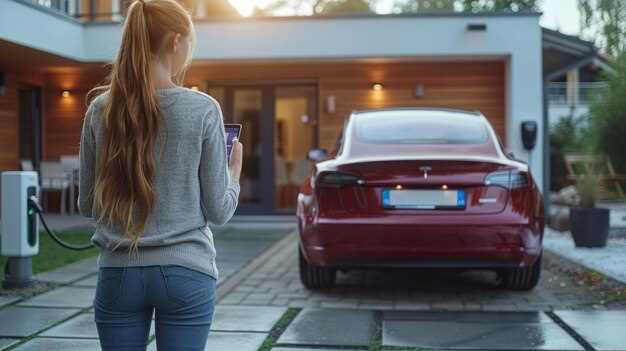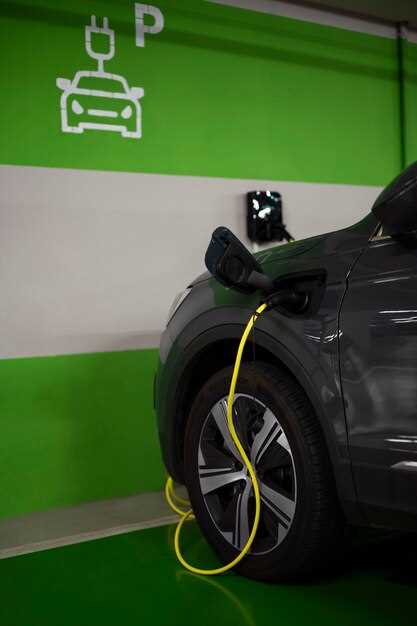Audi Plug-in Hybrid vs Fully Electric – Pros and Cons

As the automotive industry evolves, the choice between Audi’s Plug-in Hybrid (PHEV) and Fully Electric (EV) vehicles has become increasingly relevant for consumers. Understanding the distinct advantages and disadvantages of each type can guide potential buyers in making an informed decision that aligns with their lifestyle and environmental goals.
On one hand, plug-in hybrids offer the flexibility of gasoline power combined with electric capabilities, allowing drivers to switch between the two depending on their needs. This hybrid approach can alleviate range anxiety while providing the opportunity for reduced emissions during short commutes. However, the reliance on traditional fuel sources can be seen as a drawback, especially as the world shifts towards more sustainable solutions.
Conversely, fully electric vehicles promise a zero-emissions driving experience, making them an appealing choice for environmentally conscious consumers. With the increasing availability of charging stations and advances in battery technology, EVs are becoming more convenient and practical for everyday use. Nevertheless, potential buyers must consider factors such as initial costs, charging times, and available range before fully committing to an electric option.
Understanding the Driving Range of Plug-in Hybrids

The driving range of plug-in hybrids (PHEVs) is a critical factor for potential buyers when considering their suitability compared to fully electric vehicles (EVs). Understanding how PHEVs operate can provide insight into their performance and limitations.
Plug-in hybrids combine a gasoline engine with an electric motor, allowing them to operate in different modes depending on the driving conditions. The driving range typically consists of two components:
- Electric-only range: This is the distance a plug-in hybrid can travel using only electric power, generally between 20 to 50 miles depending on the model. The electric-only range allows for emissions-free driving during short commutes and everyday errands.
- Hybrid mode range: Once the electric battery is depleted, PHEVs switch to their gasoline engine. This significantly extends the total driving range, which can exceed 400 miles or more, depending on the vehicle’s fuel efficiency.
Several factors influence the driving range of plug-in hybrids:
- Battery Capacity: A larger battery typically provides a greater electric-only range but may also incrementally increase the vehicle’s overall weight.
- Driving Habits: Aggressive driving, frequent acceleration, and high speeds can reduce electric range. Gentle driving can help maximize efficiency.
- Terrain: Hilly or mountainous terrains can affect energy consumption and reduce overall driving range compared to flat roads.
- Climate Control: Using heating or air conditioning while driving can drain the electric battery faster, impacting the range.
In summary, plug-in hybrids offer the flexibility of utilizing both electric and gasoline power, allowing for extended driving ranges that can accommodate long trips while still enabling short-range electric-only travel. Understanding these nuances helps potential buyers make informed decisions between opting for a plug-in hybrid or a fully electric vehicle.
Battery Charging Options for Fully Electric Audi Models

Audi has embraced the fully electric vehicle (EV) market with a range of innovative models, offering various battery charging options to enhance the ownership experience. Understanding these charging methods is crucial for potential buyers and current owners alike.
There are three primary charging options available for fully electric Audi models:
| Charging Option | Description | Charging Speed |
|---|---|---|
| Level 1 Charging | Using a standard household outlet (120V), this method is the most accessible. It requires minimal setup and is suitable for overnight charging. | 2-5 miles of range per hour |
| Level 2 Charging | This method utilizes a dedicated home charging station or public charging point (240V). It’s the recommended option for regular use, allowing for quicker charging times. | 10-60 miles of range per hour |
| DC Fast Charging | Available at select public charging stations, this option delivers high power (up to 800V) to the battery, significantly reducing charging time, ideal for long trips. | 100-350 miles of range in 30 minutes |
Each of these options caters to different user needs and charging situations, from daily commutes to long-distance travel. Fully electric Audi models support multiple charging standards, ensuring compatibility with various charging infrastructure, further enhancing convenience for users.
Overall, understanding these battery charging options is essential for maximizing the efficiency and usability of fully electric Audi vehicles. Depending on lifestyle and driving habits, owners can select the most suitable charging method that aligns with their needs.
Maintenance Costs: Comparing Plug-in Hybrids and Electric Vehicles
When evaluating the maintenance costs of plug-in hybrids versus fully electric vehicles, several factors come into play that can significantly affect the overall expense.
Plug-in hybrids combine traditional internal combustion engines with electric technology. This dual system can lead to higher maintenance costs compared to fully electric vehicles. The presence of an internal combustion engine means that parts such as oil filters, spark plugs, and exhaust systems require periodic replacement and servicing. Additionally, the complexity of the hybrid system can lead to further maintenance needs, which may increase service time and costs.
On the other hand, fully electric vehicles generally have fewer moving parts. This simplicity translates into lower maintenance costs. There are no oil changes, fuel filters, spark plugs, or exhaust systems to worry about. The primary maintenance tasks for electric vehicles often revolve around battery health, tire rotation, and brake inspections. Regenerative braking systems in electric vehicles can also reduce wear on brake components, extending their life and reducing costs.
Battery replacement is a significant aspect to consider when comparing maintenance expenses. Although many manufacturers offer warranties that cover battery life, the eventual replacement of an electric vehicle’s battery can represent a high cost. In contrast, plug-in hybrids may require less frequent battery replacements since they rely on both electric and gasoline power, potentially resulting in a longer lifespan for individual components.
Ultimately, the choice between a plug-in hybrid and a fully electric vehicle should take into account not only the initial purchase price but also the long-term maintenance costs. While electric vehicles tend to have lower ongoing expenses due to their simpler design, plug-in hybrids may appeal to those who prefer the flexibility of both electric and gasoline options, despite potentially higher maintenance needs.
Environmental Impact: Emissions of Hybrid vs Electric
The environmental impact of vehicles is a critical factor in the transition towards sustainable transportation. When comparing plug-in hybrids and fully electric vehicles (EVs), it’s essential to analyze their emissions and overall ecological footprint.
Plug-in hybrids combine an internal combustion engine with electric propulsion. Their emissions profile is influenced by several factors:
- Driving Mode: Plug-in hybrids can operate on electric power alone for short distances, reducing emissions during city driving.
- Charging Habits: The environmental impact depends on how often the vehicle is charged and the source of the electricity. Charging from renewable sources significantly reduces overall emissions.
- Fuel Efficiency: While they produce less CO2 than traditional vehicles, plug-in hybrids still rely on gasoline, especially on longer trips, leading to emissions when the battery is depleted.
Fully electric vehicles, on the other hand, have a different emissions profile:
- Zero Tailpipe Emissions: EVs produce no emissions while driving, contributing to cleaner air quality in urban areas.
- Battery Production Impact: The manufacturing process for EV batteries can generate significant emissions, but studies often show a net benefit over the vehicle’s lifetime.
- Electricity Source: The overall emissions of fully electric vehicles depend heavily on the energy mix used for electricity generation. Renewable energy significantly lowers their carbon footprint.
In summary:
- Plug-in hybrids offer versatility but have higher emissions when operating on gasoline.
- Fully electric vehicles have zero emissions during operation, but battery production and electricity sources must be considered in their overall environmental impact.
Ultimately, choosing between a plug-in hybrid and a fully electric vehicle will depend on individual driving habits, charging access, and one’s commitment to reducing emissions.
Performance Differences in Audi’s Hybrid and Electric Line-up
Audi offers a diversified line-up that includes both fully electric and plug-in hybrid models, each with distinct performance characteristics. Understanding these differences is essential for potential buyers looking to maximize their driving experience.
Acceleration and Power Delivery: Fully electric Audi models, such as the Audi e-tron, provide instantaneous torque, resulting in rapid acceleration without delay. This benefit often translates to a more exhilarating driving experience, especially in urban environments where quick responses are advantageous. In contrast, plug-in hybrids like the Audi Q5 PHEV deliver power in a more traditional sense, combining a gasoline engine and an electric motor. While still offering decent acceleration, the experience may feel less immediate compared to their fully electric counterparts.
Driving Range: Range is a critical consideration for performance. Fully electric vehicles (EVs) from Audi provide a robust range that is gradually improving with advancements in battery technology. For instance, models like the Audi e-tron can achieve a greater distance on a single charge compared to plug-in hybrids, which are limited by their smaller battery capacity. However, plug-in hybrids benefit from a gasoline engine, allowing drivers to extend their range by switching to fuel when the battery is depleted.
Handling and Dynamics: The weight distribution differs between the two powertrains, which can affect vehicle handling. Fully electric Audis typically have a lower center of gravity due to the placement of batteries, resulting in improved stability and cornering performance. On the other hand, plug-in hybrids, while benefitting from a lower center of gravity than traditional fuel vehicles, may not match the agility of fully electric models due to the added weight of their combustion engines and associated components.
Driving Modes: Many Audi plug-in hybrids offer selectable driving modes that allow drivers to switch between electric-only, hybrid, and gasoline-only operation. This flexibility can enhance the driving experience based on individual preferences or needs. Fully electric models, though not featuring such variability, are designed for optimizing efficiency and performance in electric driving, ensuring a consistent and smooth ride.
Performance in Different Conditions: Fully electric Audi cars tend to perform exceptionally well in urban settings, where regenerative braking can be maximized, while plug-in hybrids offer versatility for longer trips without range anxiety. In challenging weather conditions, both technologies provide advantages; however, electric models benefit from the instant power delivery that can aid in traction.
In summary, Audi’s plug-in hybrids and fully electric vehicles each offer unique performance characteristics that cater to different driving needs and preferences. Fully electric models excel in immediate power delivery and range efficiency, while plug-in hybrids provide flexibility through combined power sources, making them well-suited for varied driving scenarios.
Availability of Incentives for Plug-in and Electric Vehicle Owners
Many governments worldwide offer various incentives to encourage the adoption of fully electric and plug-in hybrid vehicles. These incentives can significantly reduce the overall cost of ownership and enhance the appeal of these environmentally friendly options.
Fully electric vehicles often benefit from substantial federal tax credits, which can amount to several thousand dollars depending on the model. Additional state and local rebates can further promote the purchase of electric vehicles, making them even more financially attractive. Some regions also provide exemptions from sales tax or registration fees for electric cars, which can lead to significant savings.
Plug-in hybrid vehicle owners may also qualify for similar incentives, although they typically do not receive the same level of tax credits as fully electric models. However, many jurisdictions recognize the environmental benefits of plug-in hybrids and offer incentives such as rebates, tax credits, and access to carpool lanes, making them a viable alternative for eco-conscious drivers.
Charging infrastructure investments are another area where both fully electric and plug-in hybrid vehicle owners can benefit. Many local governments and utility companies offer incentives for the installation of home charging stations, which can reduce the initial investment for electric vehicle owners. Public charging stations may also provide free or discounted charging options, further enhancing the cost-effectiveness of owning an electric vehicle.
Moreover, insurance discounts and reduced maintenance costs are additional advantages for both categories of vehicles, resulting from their lower emissions and fewer mechanical components compared to traditional combustion engines. These benefits can lead to a more economical ownership experience over time.
Ultimately, the availability of incentives plays a crucial role in the decision-making process for potential buyers of plug-in hybrid and fully electric vehicles, making them more appealing in the current automotive market.




